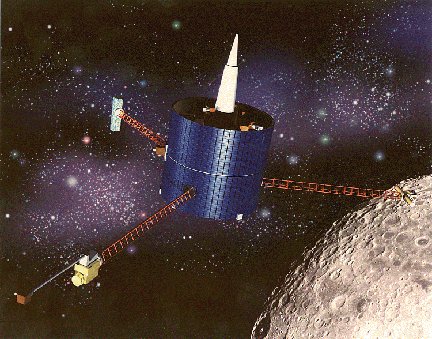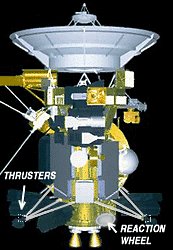Spin and Three-Axis
Stabilization

Spin and Three-Axis Stabilization
Credits - NASA

Credits - NASA
Spin stabilization and three-axis stabilization are two
methods that are used to orient satellites. With spin stabilization, the entire
spacecraft rotates around its own vertical axis, spinning like a top. This
keeps the spacecraft's orientation in space under control. The advantage of
spin stabilization is that it is a very simple way to keep the spacecraft
pointed in a certain direction. The spinning spacecraft resists perturbing
forces, which tend to be small in space, just like a gyroscope or a top. Designers of early satellites used
spin-stabilization for their satellites, which most often have a cylinder shape
and rotate at one revolution every second. A disadvantage to this type of
stabilization is that the satellite cannot use large solar arrays to obtain
power from the Sun. Thus, it requires large amounts of battery power. Another
disadvantage of spin stabilization is that the instruments or antennas also
must perform “despin” maneuvers so that antennas or optical instruments point
at their desired targets. Spin stabilization was used for NASA's Pioneer 10 and
11 spacecraft, the Lunar Prospector, and the Galileo Jupiter orbiter.
With three-axis stabilization, satellites have small
spinning wheels, called reaction wheels or momentum wheels, that rotate so as
to keep the satellite in the desired orientation in relation to the Earth and
the Sun. If satellite sensors detect that the satellite is moving away from the
proper orientation, the spinning wheels speed up or slow down to return the
satellite to its correct position. Some spacecraft may also use small
propulsion-system thrusters to continually nudge the spacecraft back and forth
to keep it within a range of allowed positions. Voyagers 1 and 2 stay in
position using 3-axis stabilization. An advantage of 3-axis stabilization is
that optical instruments and antennas can point at desired targets without
having to perform “despin” maneuvers.



